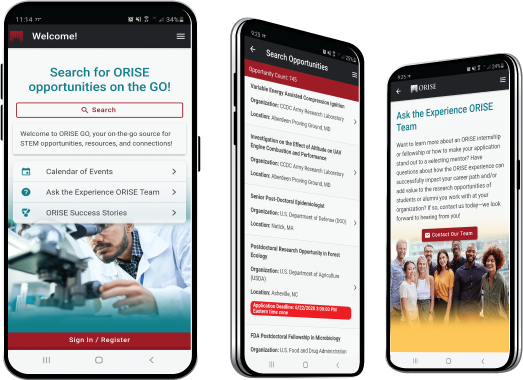Real-Time Image Enhancement With Cross-Sensor Prior Information
Create and release your Profile on Zintellect – Postdoctoral applicants must create an account and complete a profile in the on-line application system. Please note: your resume/CV may not exceed 2 pages.
Complete your application – Enter the rest of the information required for the IC Postdoc Program Research Opportunity. The application itself contains detailed instructions for each one of these components: availability, citizenship, transcripts, dissertation abstract, publication and presentation plan, and information about your Research Advisor co-applicant.
Additional information about the IC Postdoctoral Research Fellowship Program is available on the program website located at: https://orise.orau.gov/icpostdoc/index.html.
If you have questions, send an email to ICPostdoc@orau.org. Please include the reference code for this opportunity in your email.
Research Topic Description, including Problem Statement:
Intelligence, surveillance, and reconnaissance (ISR) assets used to collect, process, and transmit full motion video (FMV)—and often subject to size-weight-power-and-cost (SWaP-C) constraints—are also limited by natural light conditions and often have less than optimal image quality/resolution for their assigned task. Additionally, real-time imaging frame rates and signals-to-noise ratios (SNRs) in nonpanchromatic imaging systems, such as Light, Detection, and Ranging (LIDAR) and Synthetic Aperture Radar (SAR) systems, are limited by the system’s link budget, transmitter power and bandwidth, and processing chain execution time. This topic seeks to identify and formulate signal processing techniques that utilize prior information from sensor data and images to augment, expedite, and enhance real-time data collection, exploitation, and image post-processing. Prior information should be drawn from different sensing/imaging modalities than that of the system whose capabilities are being augmented (cross-sensor data), i.e. if attempting to enhance the capabilities of a LIDAR system, one could use SAR data, panchromatic data, or multispectral data, but should not use LIDAR data from a similar system. Techniques should either show potential for use in real-time imaging systems or should be tested as such. This means computational complexity should be minimized wherever possible. Therefore, techniques showing conceptual simplicity are preferable to those requiring brute force processing. Rigorous contextualization in terms of fundamental physical, statistical, and information theory principles is preferred. However, Artificial Intelligence/Machine Learning (AI/ML) based proposals will also be considered. End products should aspire to fuse data at the signal level and significantly improve (2x-10x improvement) on existing registration-overlay hybrid imaging techniques. Is it possible to render useful images from extremely sparse or low SNR data sets by leveraging this cross-sensor data, which otherwise would be unable to form a useful image? How much can the burden of SNR requirements be relaxed by using cross-sensor priors? What degree of resolution enhancement can be achieved? Can prior cross-sensor data help to enhance partially obscured/shadowed image areas?
Example Approaches:
Potential approaches/problems:
- Using panchromatic imaging data to augment coherent, single speckle realization digital holography systems. How much can image contrast, resolution, and sharpness be improved? To what degree can speckle noise be reliably removed? What are the tradeoffs? How does this compare to other methods used to suppress speckle noise?
- High-speed photodetector (>~100kHz) imaging augmentation. How can cross-sensor data be used to reduce integration time/expedite image formation? Is there a fundamental limit to the cross-sensor data that priors can provide, and if so what is it? How does strength of detector noise, e.g. read noise, quantization noise, etc., affect this technique? How would this work with Geiger mode vs conventional detection?
Relevance to the Intelligence Community:
The ability to record, quickly process, and transmit real-time full motion video (FMV) is essential for the success of many intelligence missions. Leveraging prior information for the enhancement of real-time imaging data streams would add increased flexibility to the trade space of existing FMV systems, lowering power usage aboard platforms. Advances of this nature would also serve to enhance the situational awareness of mission commanders and decisionmakers by offering more information than on-station assets can provide organically, enabling better informed and more responsive mission execution. Finally, agencies could also choose to field lower-cost, smaller size ISR assets with cheaper, mass-produced components which, when augmented with real-time prior information signal processing algorithms, offer equivalent capability to systems that are currently fielded.
Key Words: Incoherent Imaging, Coherent Imaging, Data Fusion, Digital Holography, 3D Imaging, LIDAR, SAR, Bayesian, Direct Detection, Estimation, Detection, Real-Time Imaging, Full Motion Video, Inferential Data Exploitation, Cramer-Rao Analysis, Wave Optics, Graph Theory, Network Theory, Image Segmentation, AI/Ml, Machine Vision, Kalman Filter, High-Speed Photodetectors, Geiger-Mode Detection
Postdoc Eligibility
- U.S. citizens only
- Ph.D. in a relevant field must be completed before beginning the appointment and within five years of the application deadline
- Proposal must be associated with an accredited U.S. university, college, or U.S. government laboratory
- Eligible candidates may only receive one award from the IC Postdoctoral Research Fellowship Program
Research Advisor Eligibility
- Must be an employee of an accredited U.S. university, college or U.S. government laboratory
- Are not required to be U.S. citizens
- Citizenship: U.S. Citizen Only
- Degree: Doctoral Degree.
-
Discipline(s):
- Chemistry and Materials Sciences (12 )
- Communications and Graphics Design (2 )
- Computer, Information, and Data Sciences (17 )
- Earth and Geosciences (21 )
- Engineering (27 )
- Environmental and Marine Sciences (14 )
- Life Health and Medical Sciences (45 )
- Mathematics and Statistics (10 )
- Other Non-Science & Engineering (2 )
- Physics (16 )
- Science & Engineering-related (1 )
- Social and Behavioral Sciences (29 )

 ORISE GO
ORISE GO

The ORISE GO mobile app helps you stay engaged, connected and informed during your ORISE experience – from application, to offer, through your appointment and even as an ORISE alum!





